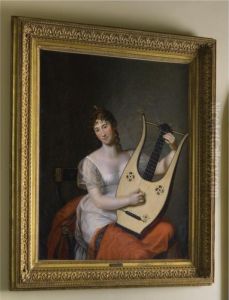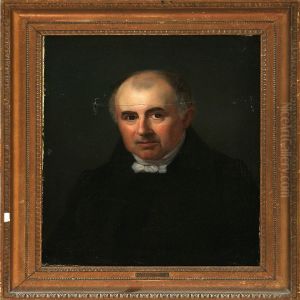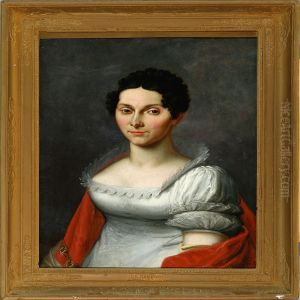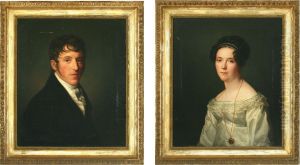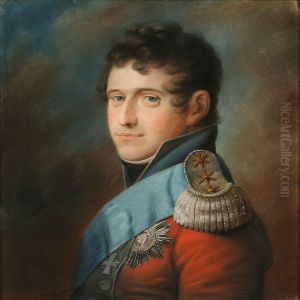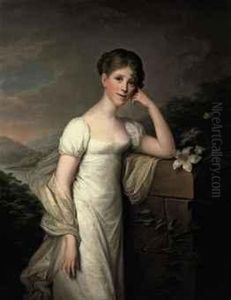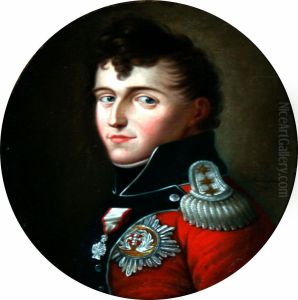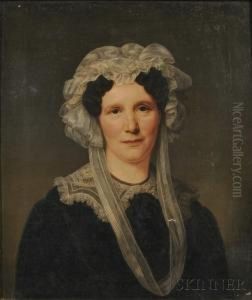Friederich Carl Groger Paintings
Friedrich Carl Gröger was a notable German portrait painter who was born on October 14, 1766, in Plön, a small town in the Duchy of Holstein, which at the time was part of the Holy Roman Empire and is now in Germany. He displayed a talent for art at a young age and began his formal training with pastel painting under Danish painter Jens Juel. Gröger's skills in portraiture quickly became evident, and he honed his craft under Juel’s tutelage.
After his early education, Gröger decided to further his studies and experience by traveling. He went to Hamburg and continued his art education. Gröger's journey as an artist led him to Paris, which was then the heart of the European art world, where he was able to learn from the leading painters of his time. This exposure to the French art scene greatly influenced his style and technique.
Gröger returned to Northern Germany and settled in Hamburg, where he became a sought-after portraitist. He was known for his ability to capture the character and social standing of his sitters through his portraits. He painted many prominent figures of his time, including members of the bourgeoisie, clergy, and nobility. Gröger's portraits are characterized by their realistic representation, attention to detail, and subtle use of color.
Despite his success as a portrait artist, Friedrich Carl Gröger is not as widely known today as some of his contemporaries. Nevertheless, his work provides valuable insight into the society and culture of Northern Germany during the late 18th and early 19th centuries. His portraits are held in various collections and museums, serving as an enduring legacy of his artistic talent.
Gröger's contribution to German art history is significant, particularly in the context of portrait painting of the period. His works reflect the transition in art styles and the influence of French art on German painters of the time. Friedrich Carl Gröger passed away on November 9, 1838, in Hamburg, but his portraits continue to be appreciated for their historical value and artistic merit.
